Complex Tibial Fracture with Displaced Tibial Tubercle and Open Tibial Shaft.
Score and Comment on this Case
Clinical Details
Clinical and radiological findings: A 33-year-old male involved in a motorcycle versus car collision presented with a displaced tibial tubercle fracture, non-displaced bicondylar split fracture, a Gustilo-Anderson type 3b open tibial shaft fracture, and a non-displaced distal metaphyseal tibia fracture. The initial radiological assessment confirmed the fracture patterns and the open nature of the tibial shaft injury. Neurovascular examination was unremarkable.
Preoperative Plan
Planning remarks: The preoperative plan involved fixation of the tibial tubercle followed by intramedullary nailing of the tibial shaft. The approach required careful consideration of the tibial tubercle fracture to ensure anatomic reduction and interfragmentary compression while avoiding interference with the nail path. A semi-extended position was planned for nailing to accommodate the tubercle fixation.
Surgical Discussion
Patient positioning: The patient was positioned supine on the operating table with the knee in a semi-extended position to facilitate both the fixation of the tibial tubercle and subsequent intramedullary nailing.
Anatomical surgical approach: A longitudinal anterior approach was utilized to access the tibial tubercle. The incision extended from the patellar tendon insertion to the proximal tibia, allowing direct visualization and reduction of the tubercle fragment. Subperiosteal dissection was performed to expose the fracture site. The intramedullary nailing was performed through a standard entry point at the proximal tibia, ensuring that the nail path did not compromise the tubercle fixation.
Operative remarks:The surgeon noted that all criteria for safely performing intramedullary nailing in the presence of a tibial tubercle fracture were met, including a simple fracture pattern, good bone quality, and successful anatomic reduction with interfragmentary compression. The fixation of the tubercle was achieved with implants positioned away from the nail path, allowing for safe passage of the intramedullary nail. The procedure was completed without intraoperative complications.
Postoperative protocol: Postoperatively, the patient was advised to maintain non-weight bearing status on the affected limb for 6 weeks, followed by progressive weight bearing as tolerated. Range of motion exercises for the knee were initiated early to prevent stiffness, with a focus on achieving full extension and flexion.
Follow up: Not specified.
Orthopaedic implants used: Interfragmentary screws for tibial tubercle fixation, intramedullary nail for tibial shaft stabilization.
Search for Related Literature

orthopaedic_trauma
- United States , Seattle
- Area of Specialty - General Trauma
- Position - Specialist Consultant

Industry Sponsership
contact us for advertising opportunities
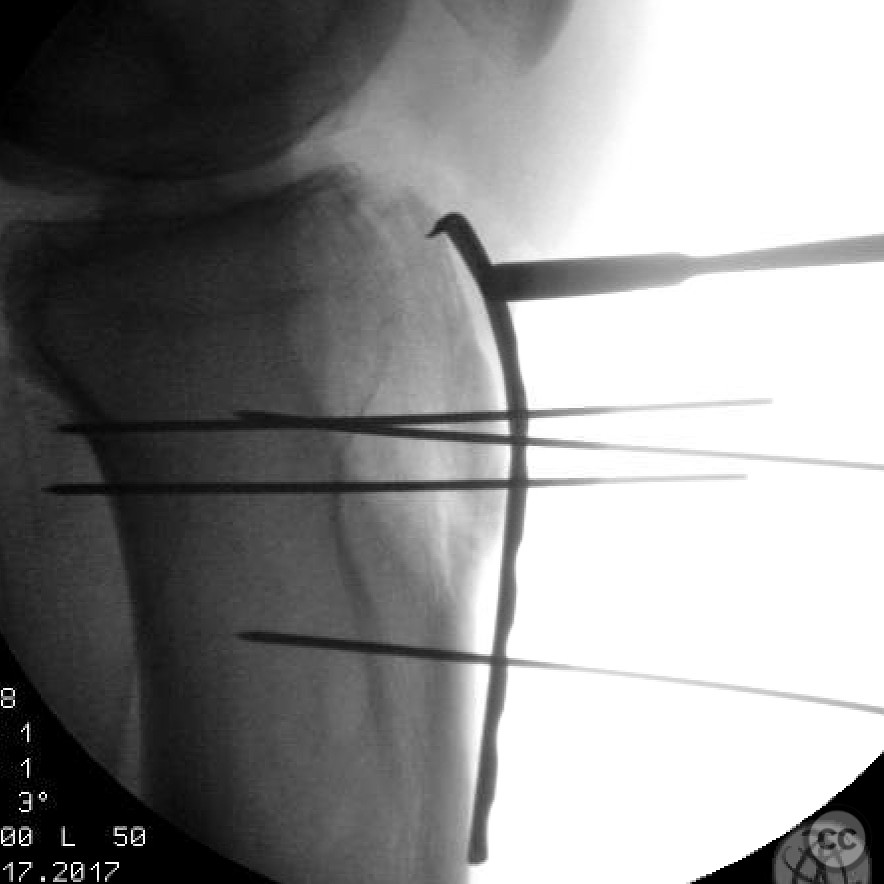
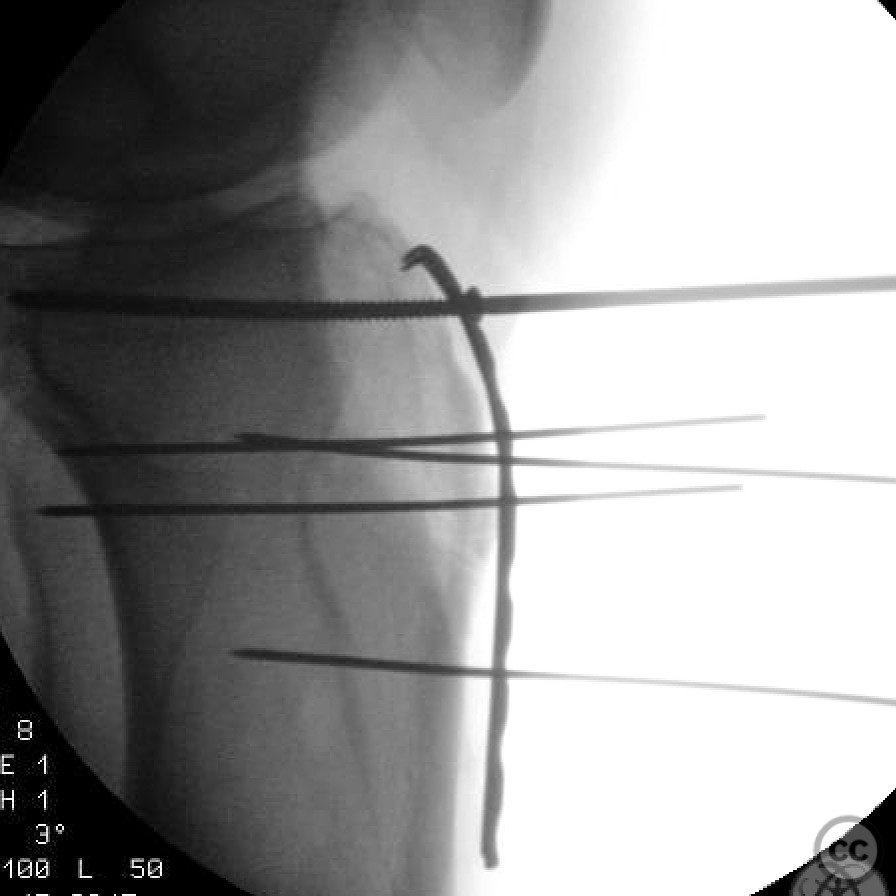
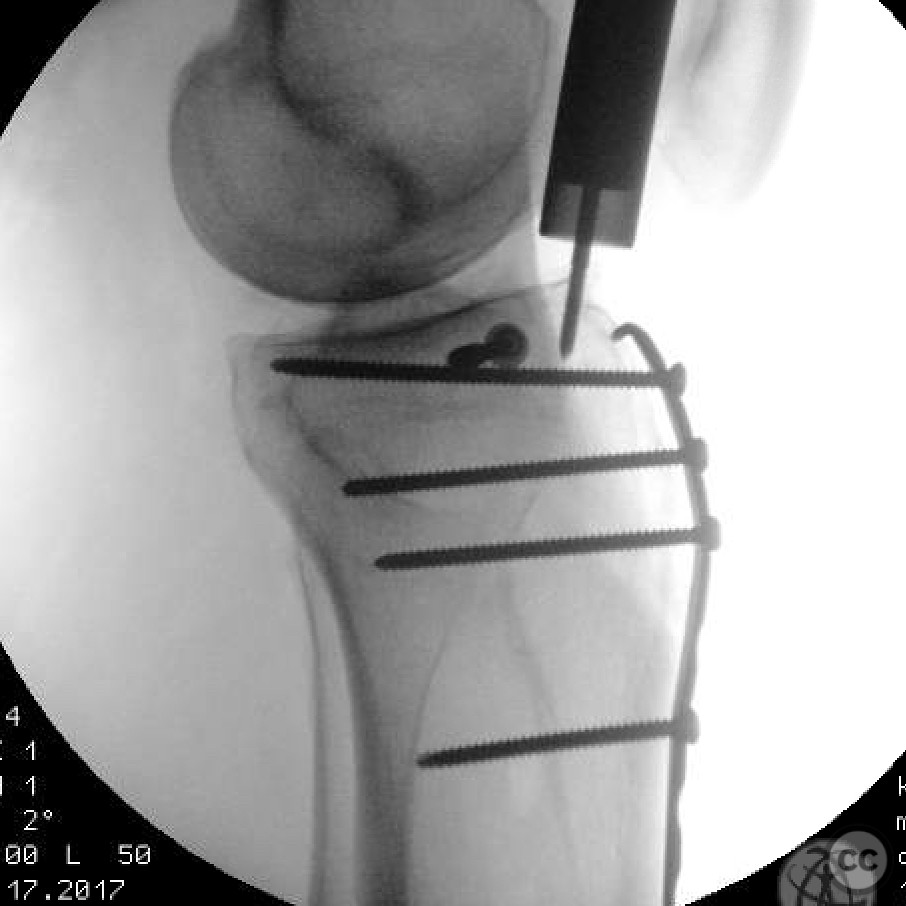
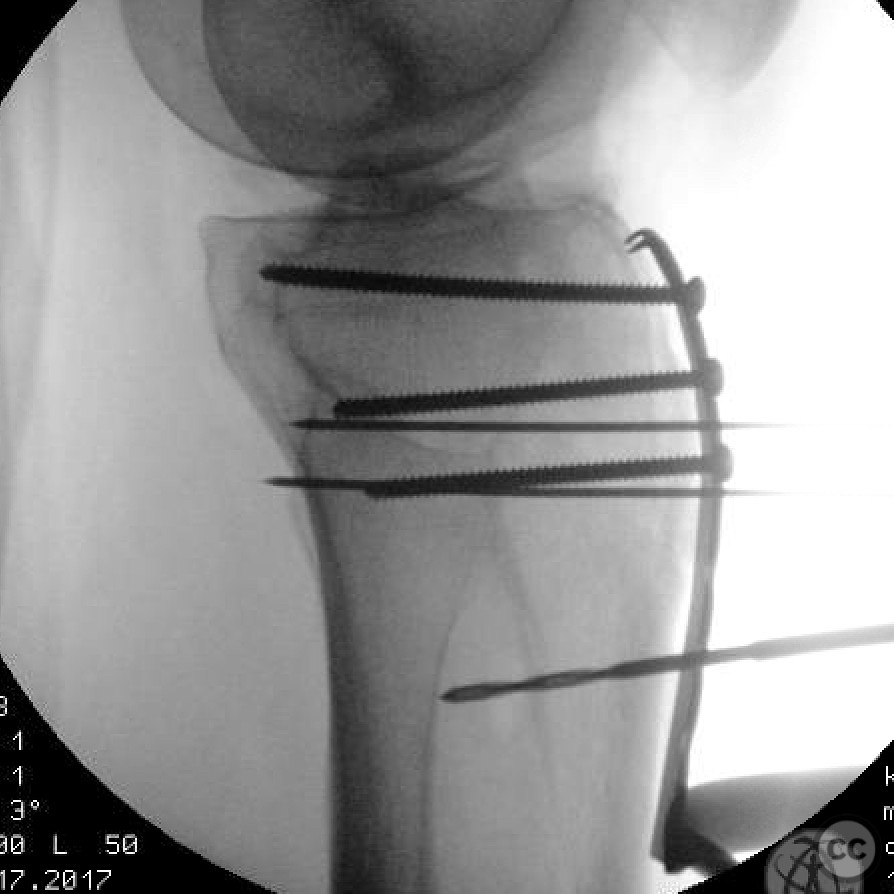
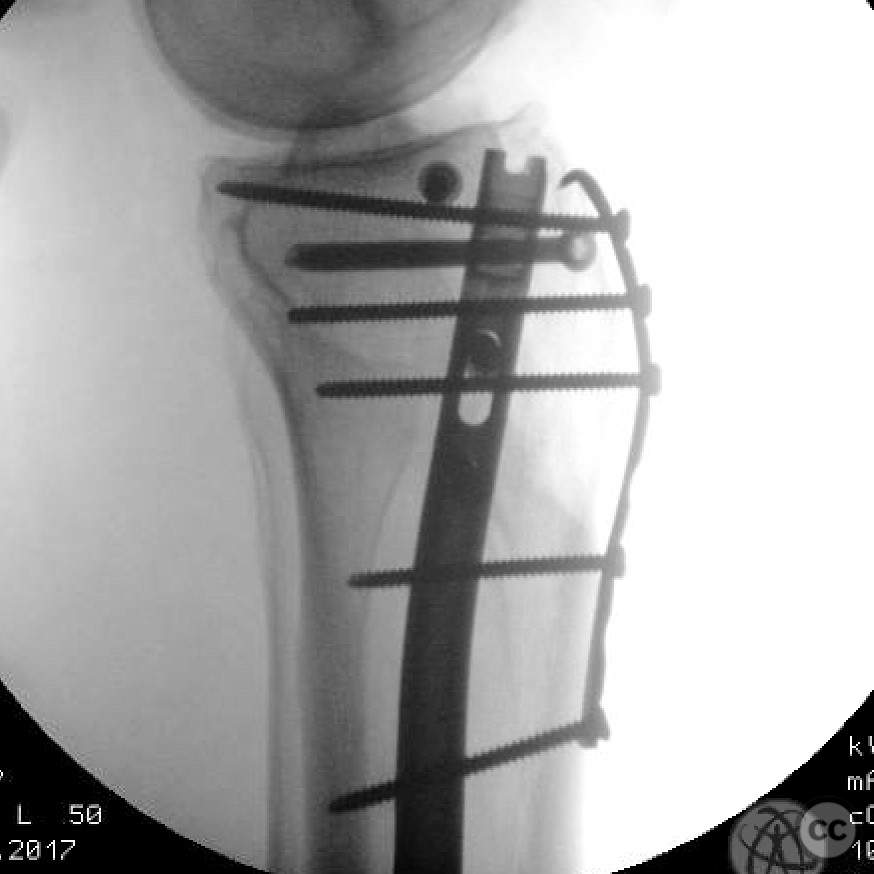
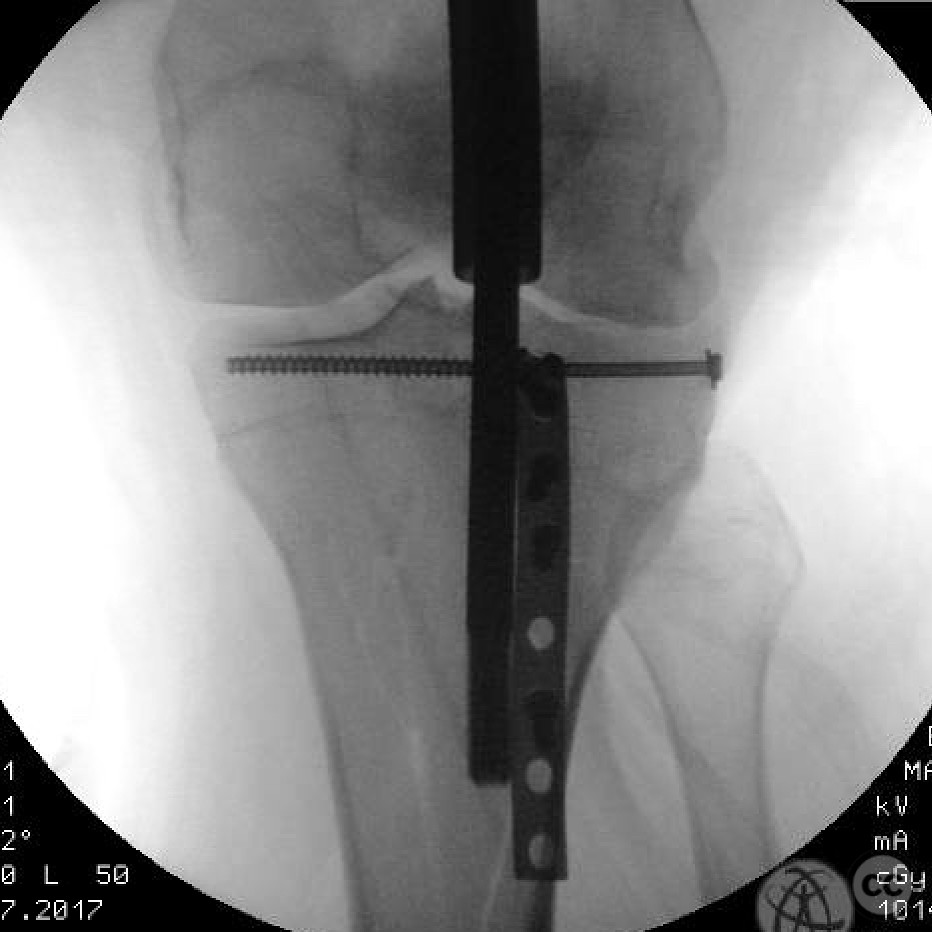
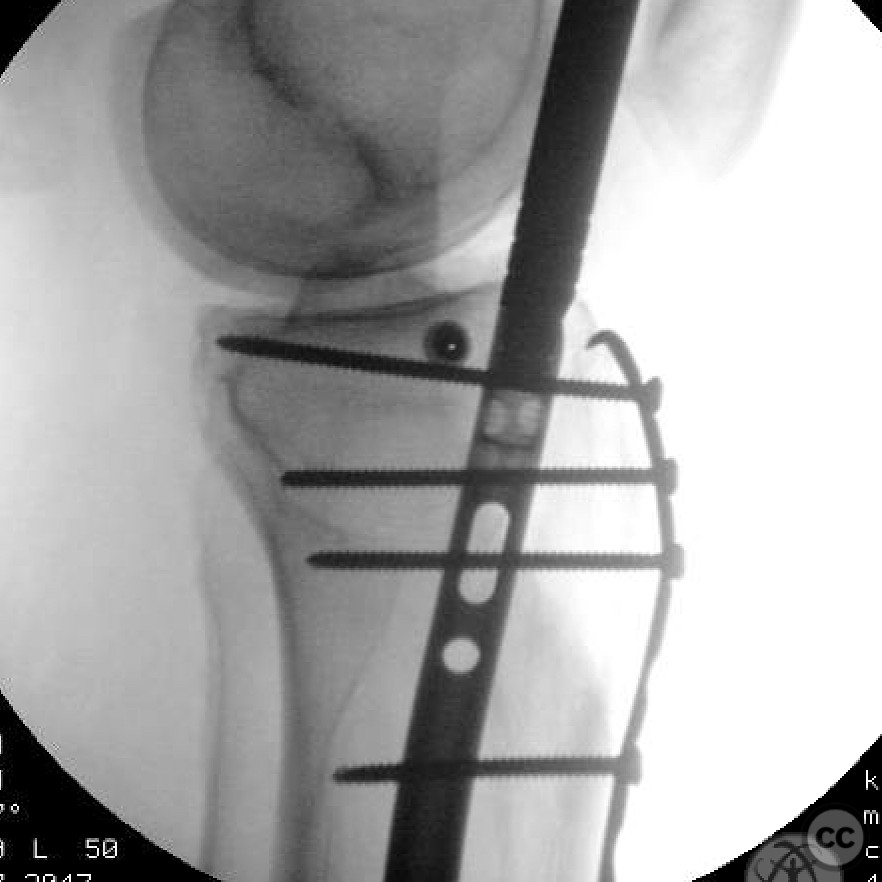
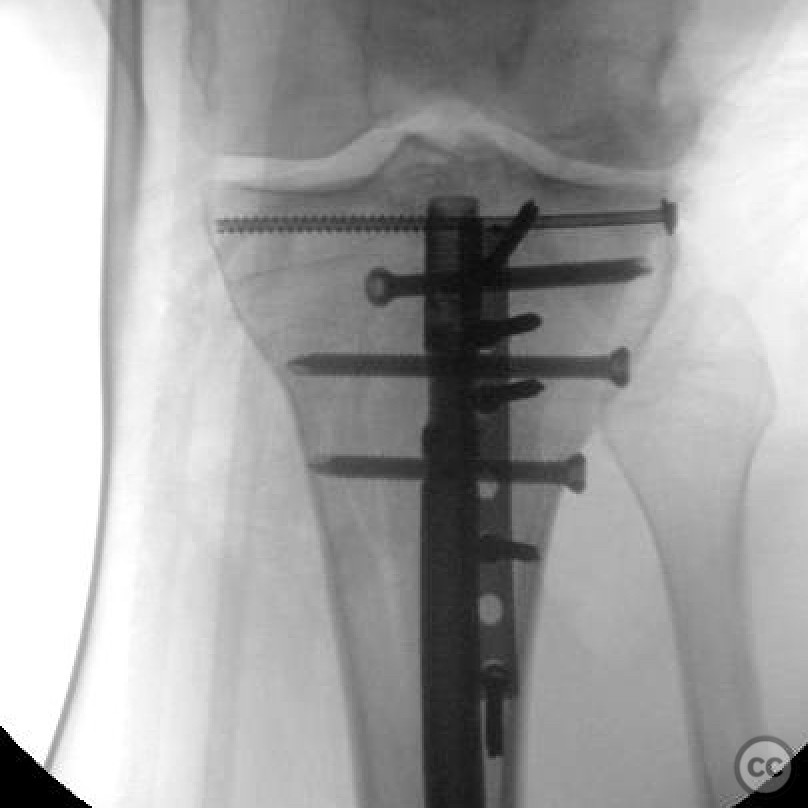
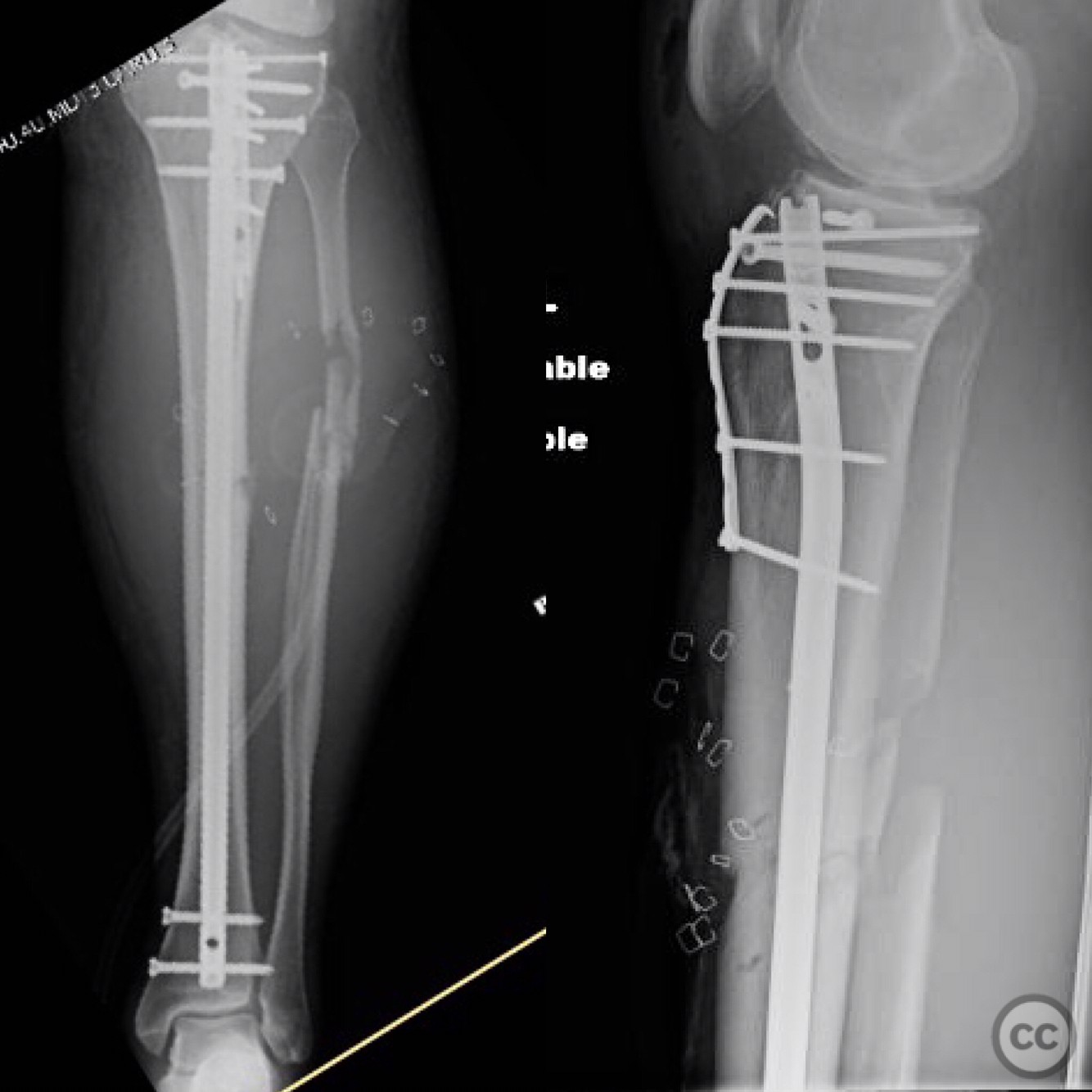
Article viewed 101 times
26 Jul 2025
Add to Bookmarks
Full Citation
Cite this article:
Surname, Initial. (2025). Complex Tibial Fracture with Displaced Tibial Tubercle and Open Tibial Shaft.. Journal of Orthopaedic Surgery and Traumatology. Case Report 7988519 Published Online Jul 26 2025.